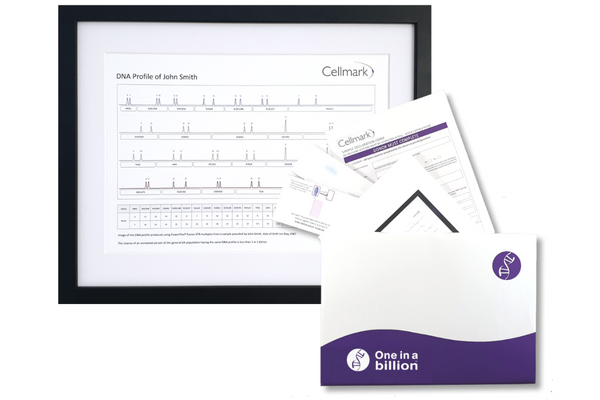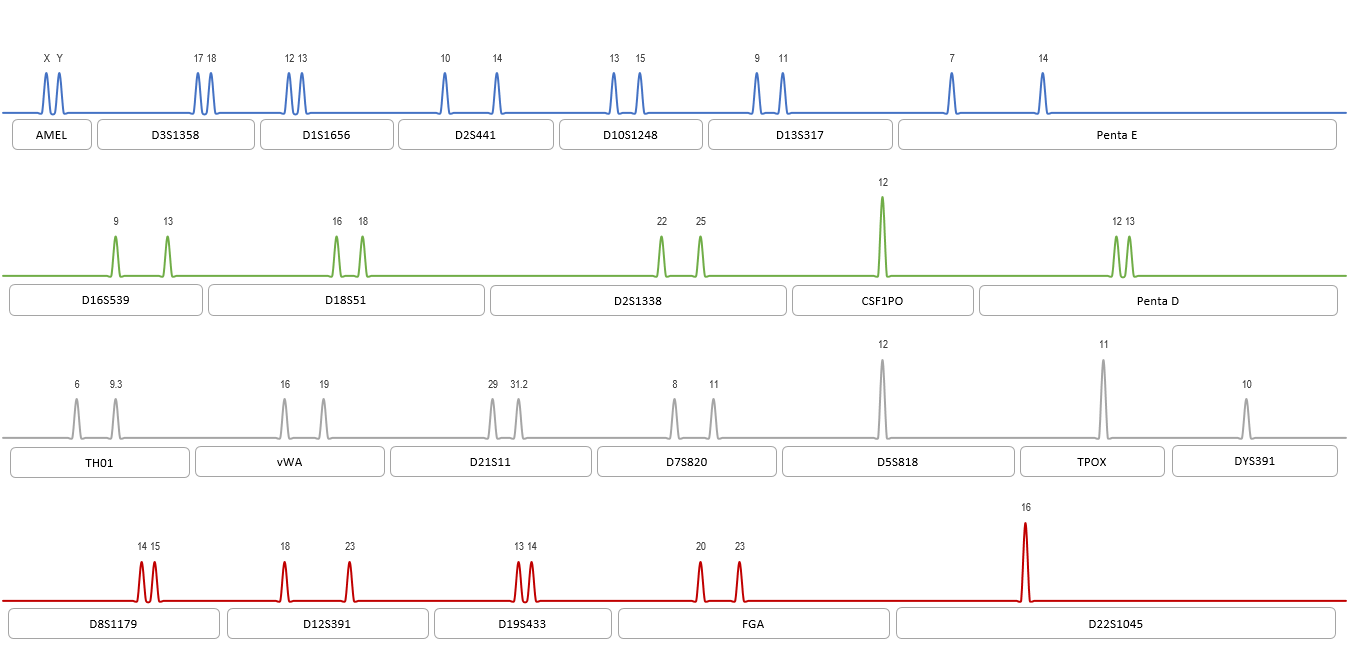
One in a billion - a scientific way to demonstrate your individuality
Each one of us is unique and this is reflected in our genetic makeup, our DNA. In fact, no two people in the world have the same DNA except for genetically identical twins. DNA profiling captures some of the differences in your DNA and provides the gold standard genetic identification test.
DNA profiling is not only a powerful way to distinguish and identify people, but also, because our DNA is inherited from our parents, it is the most reliable way to establish if people are closely related to each other.
You can now get a framed copy of your DNA profile from the leading forensic company Cellmark, who carry out over 150,000 DNA profiles every year.
DNA profiling
In the mid-1980s professor Sir Alec Jeffreys revolutionised forensic investigation by discovering a way to analyse DNA and produce a powerful identity test. Today we use a modern evolution of the techniques developed by Alec Jeffreys that is faster, more sensitive and provides a digital result.
From a simple mouth swab we test multiple parts of your DNA in a single test - the individual tests are identified by coloured fluorescent tags which result in a multicoloured DNA profile that is a scientific representation of your identity.
DNA profiling is a highly sensitive technique that is used around the world; by the police to investigate crime and by families wanting to confirm biological relationships such as paternity.
Understanding your DNA profile
Your DNA is made up of three billion letters of genetic code. Although the vast majority of your genetic code is the same as everyone else’s (we all share approximately 99.9% of our DNA) there are some parts of the DNA where there are differences. By targeting the most variable parts, DNA profiling can tell people apart with exceptional discrimination.
DNA profiling uses a set of tests called Short Tandem Repeat (STR) markers, which each measure sections of DNA where there is known to be great variability between people. Within these sections, short DNA sequences are repeated a different number of times. The STR markers measure the number of DNA repeats to provide a digital DNA profile which distinguishes you from everyone else.
The framed DNA profile is produced using a 24 marker system (23 STRs and a test designed to indicate if the person is biologically male or female). The tests result in coloured peaks with the number of DNA repeats recorded above each peak. The results are then summarised in a table at the bottom of the graph. Each STR test can result in one or two peaks because everyone has two copies of each marker, one inherited from their mother, one inherited from their father. When there is only one peak it indicates that the same sized marker has been inherited from both parents.

All of this information is produced from a small swab taken from the inside of your mouth. The cells collected by the swab each contain all the DNA information needed to produce a DNA profile.
One in a billion?
The phrase one in a billion helps people understand the magnitude of how rare their DNA is. The chance of an unrelated person of the general UK population having the same DNA profile is less than one in a billion.
